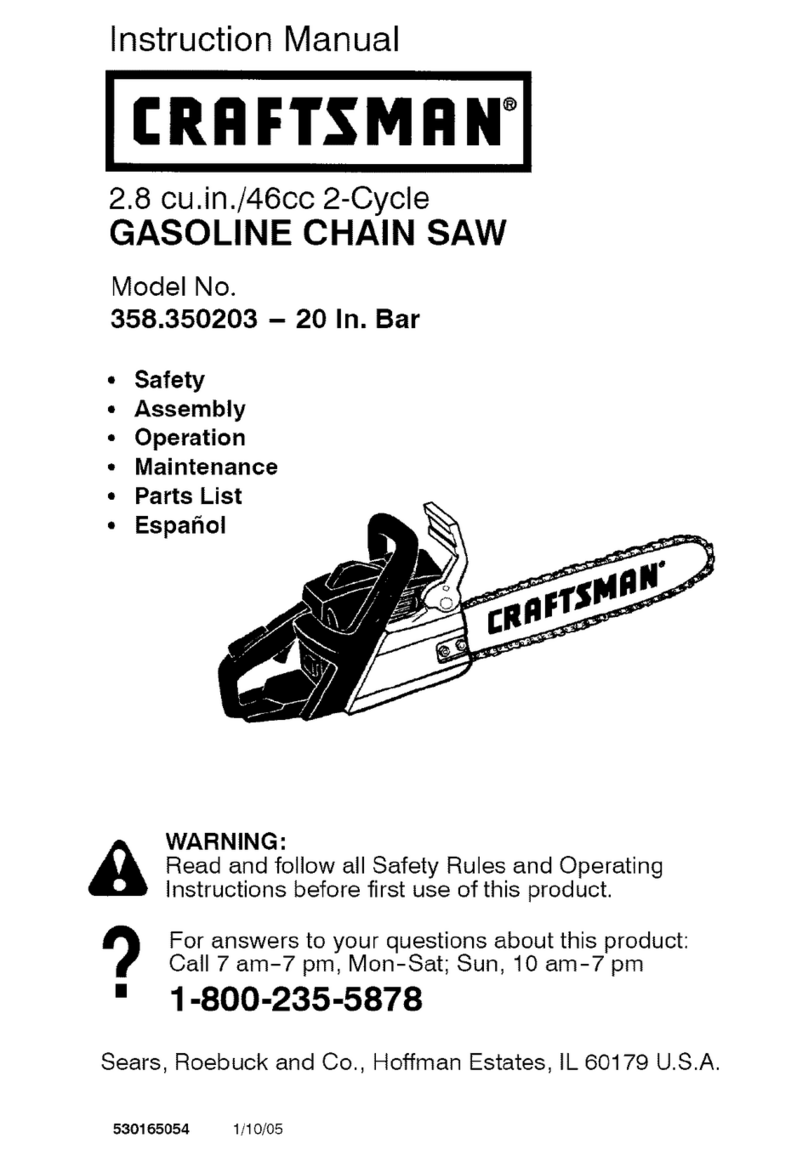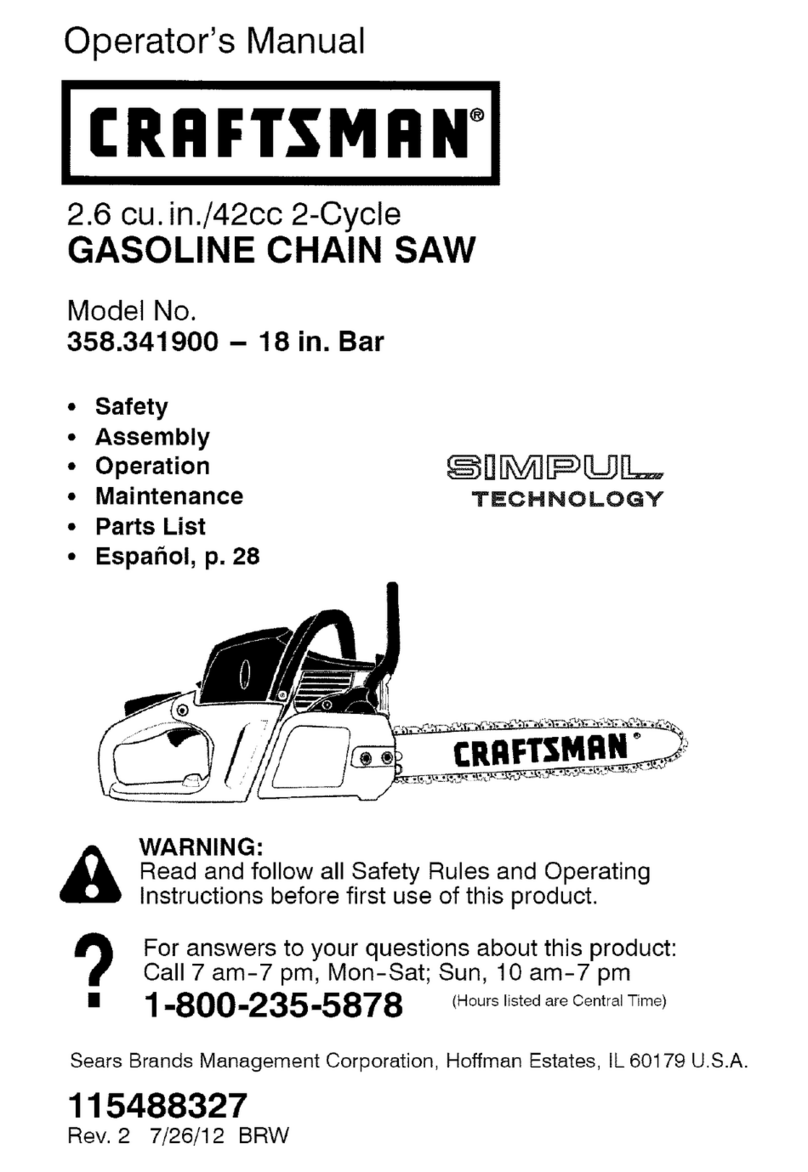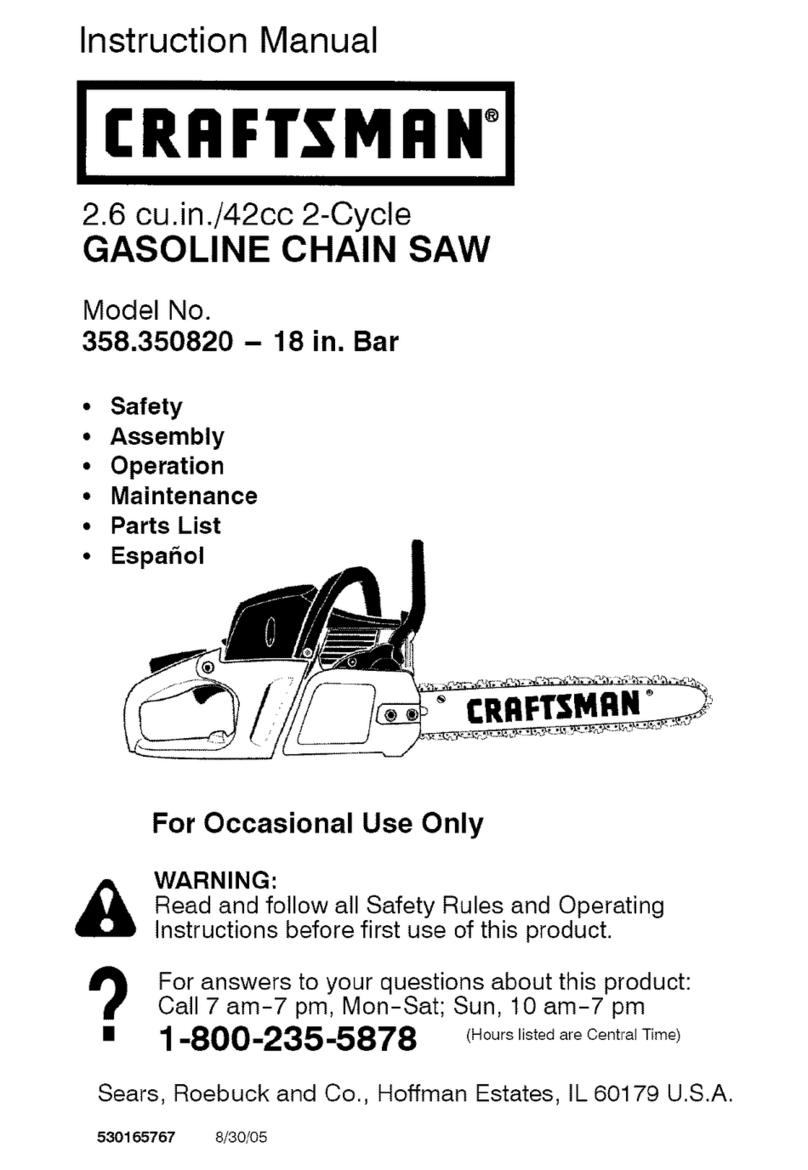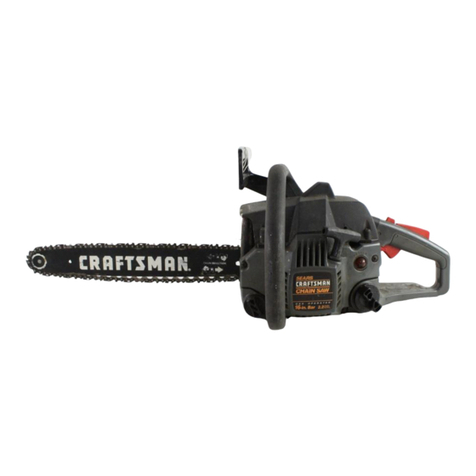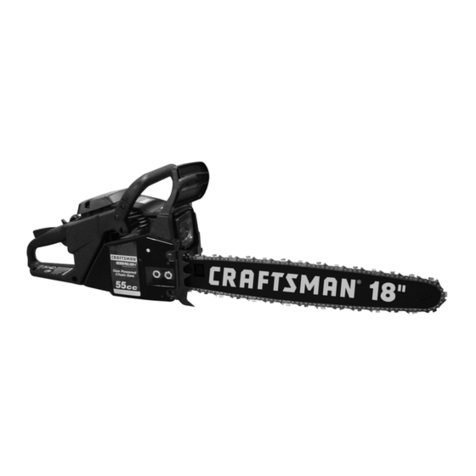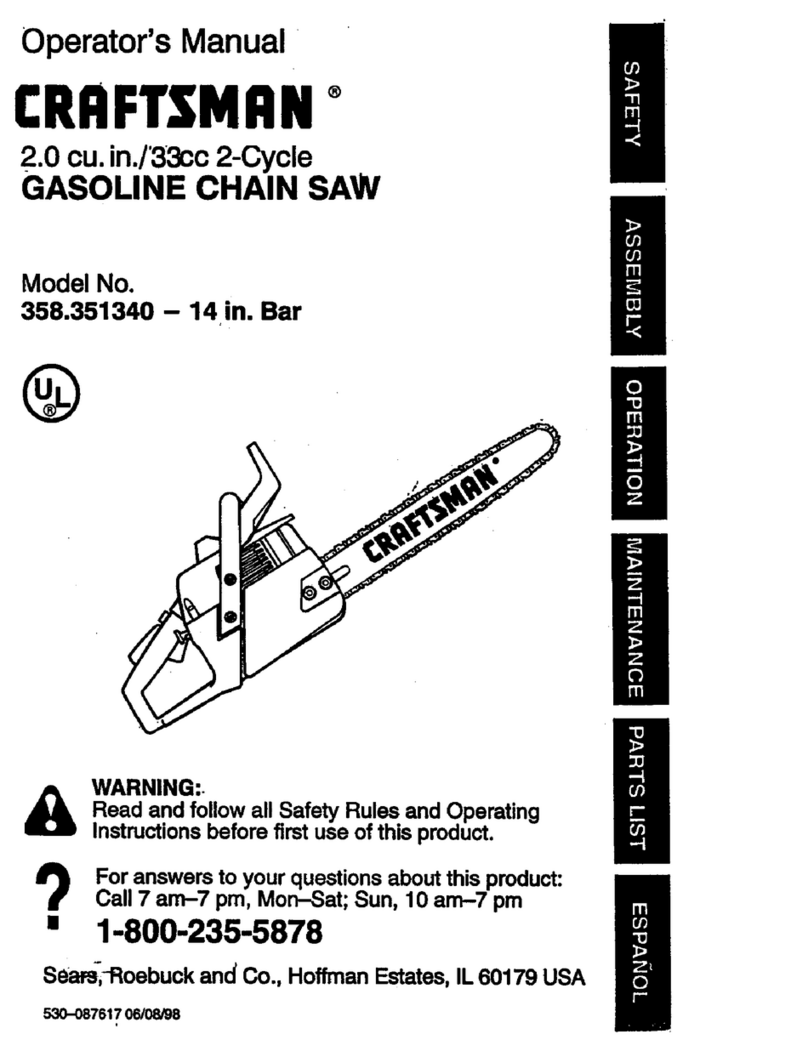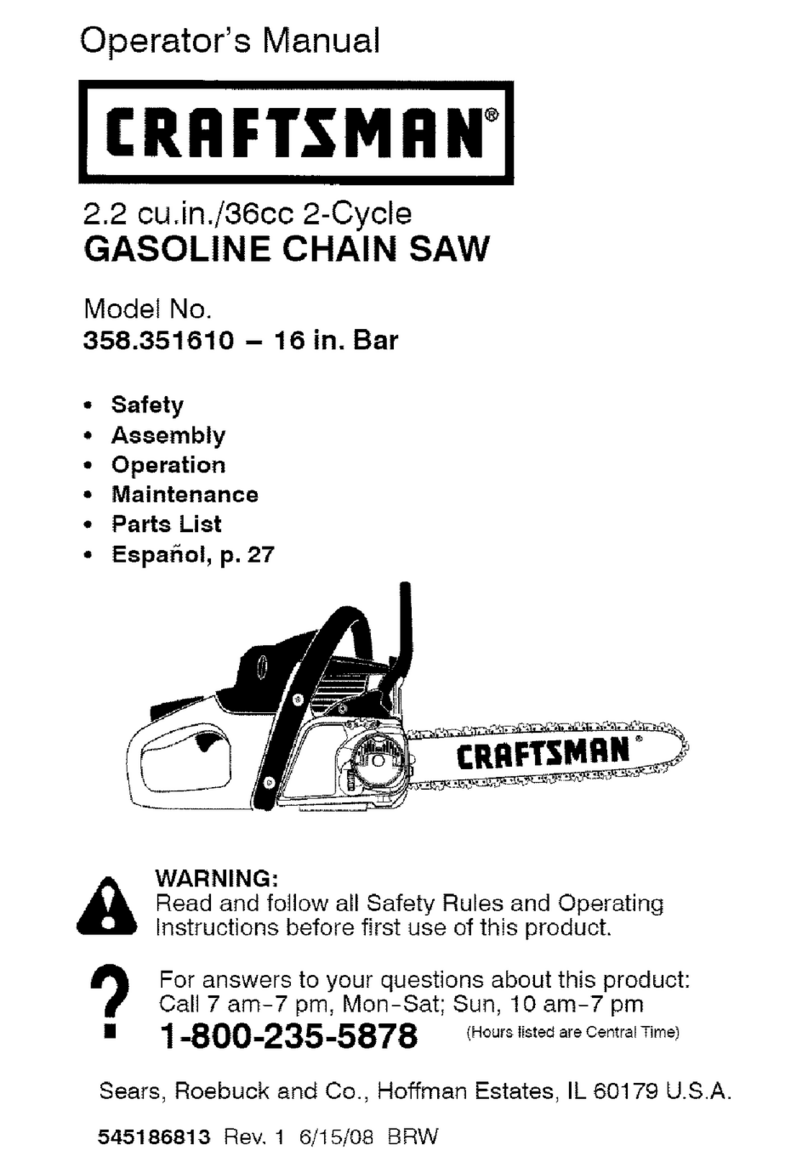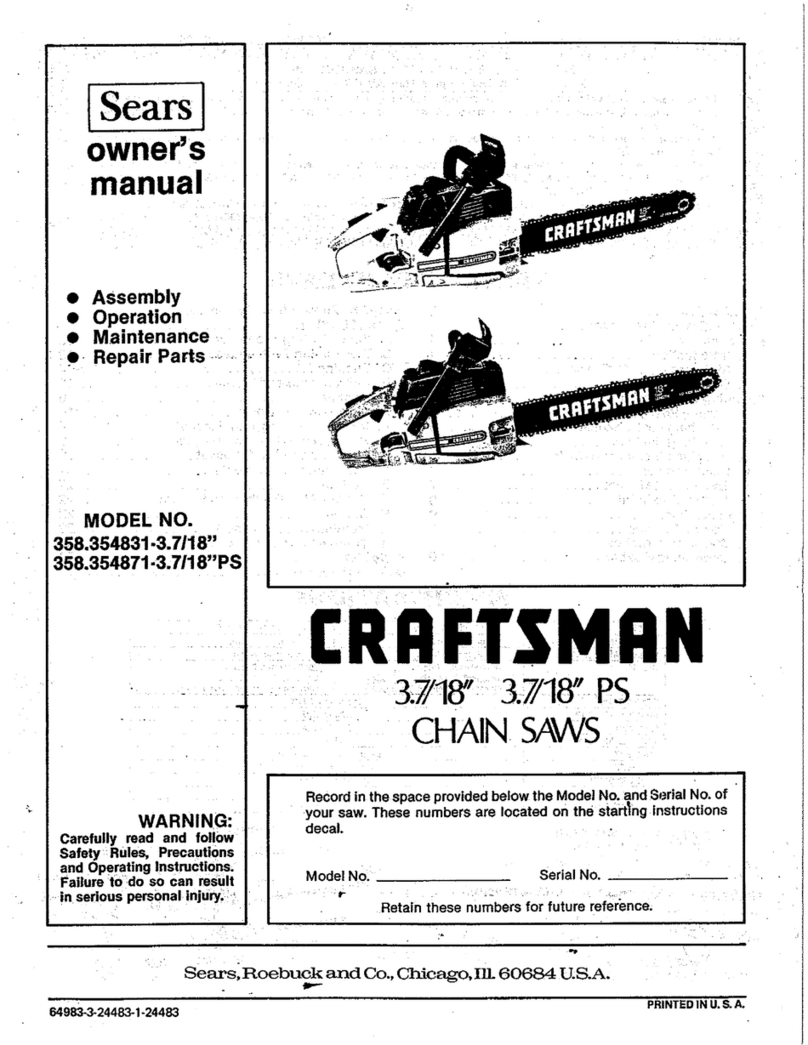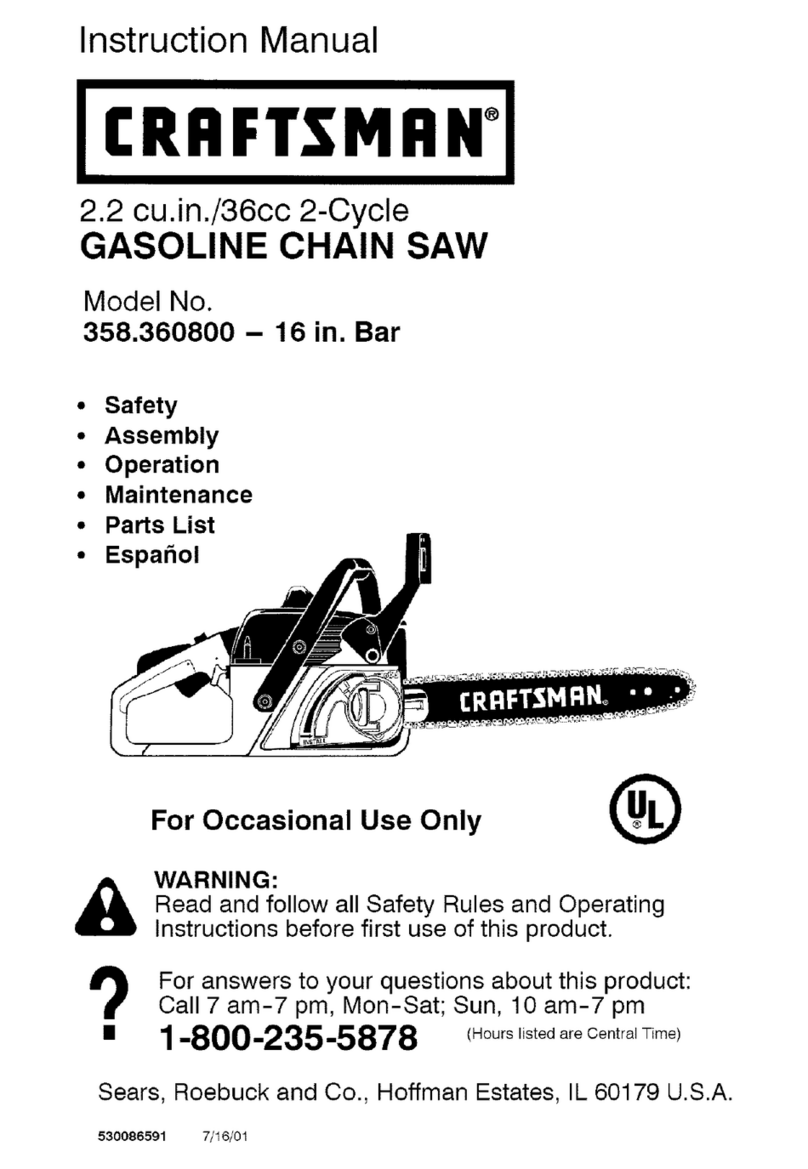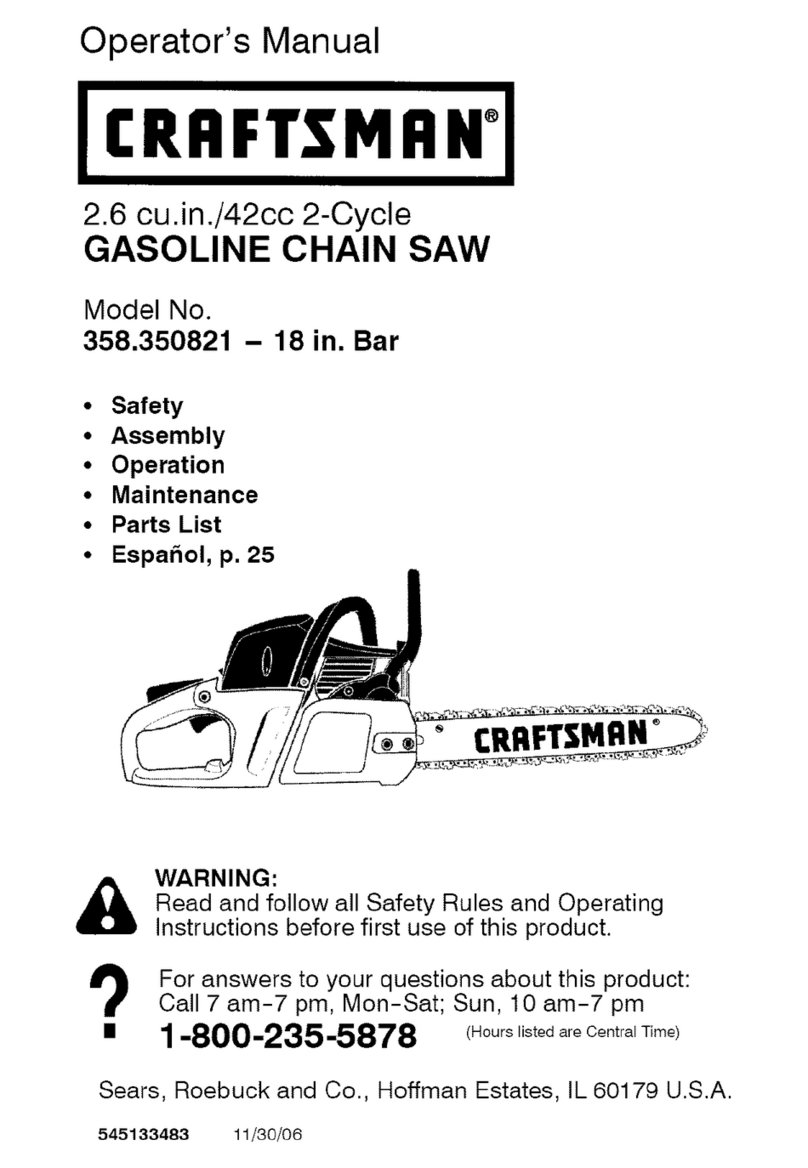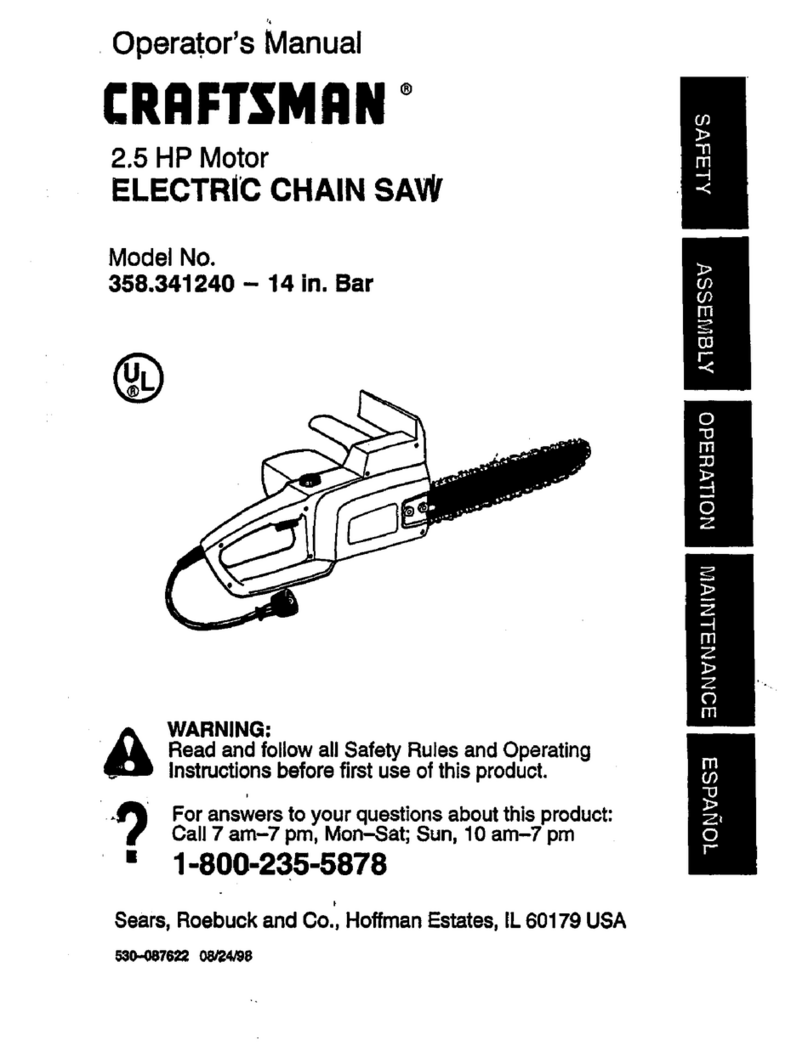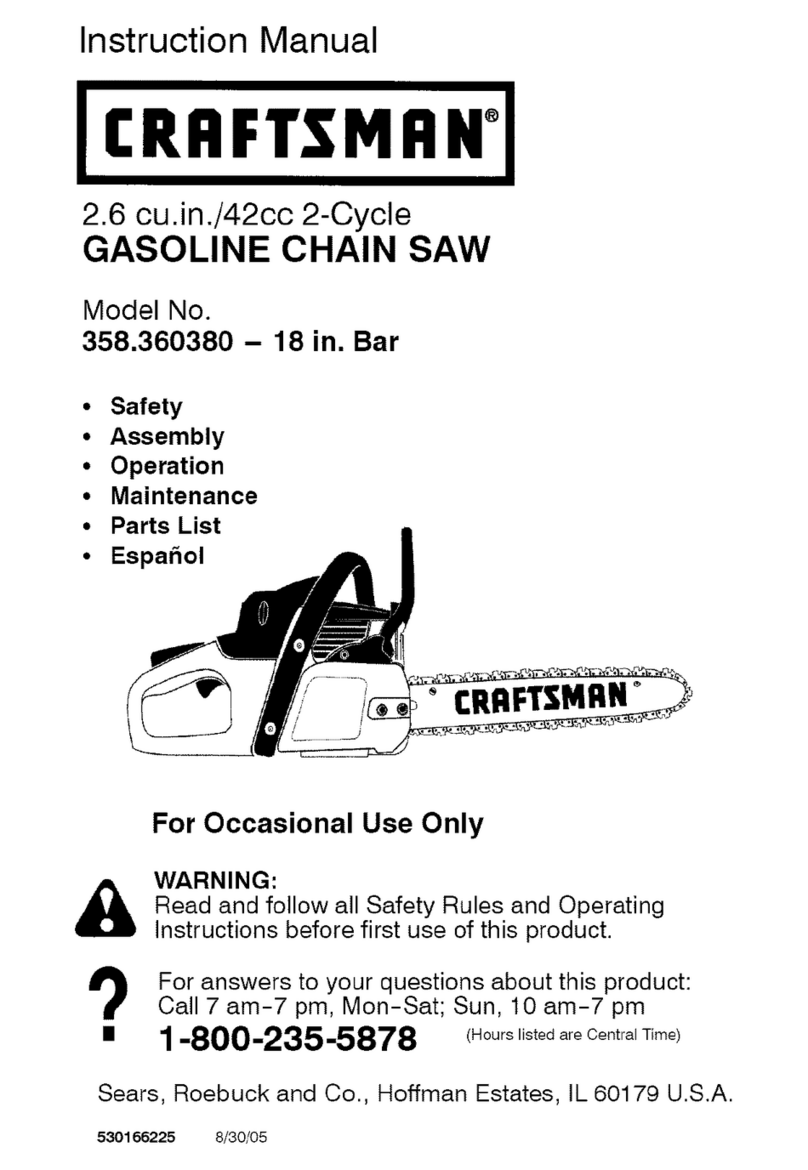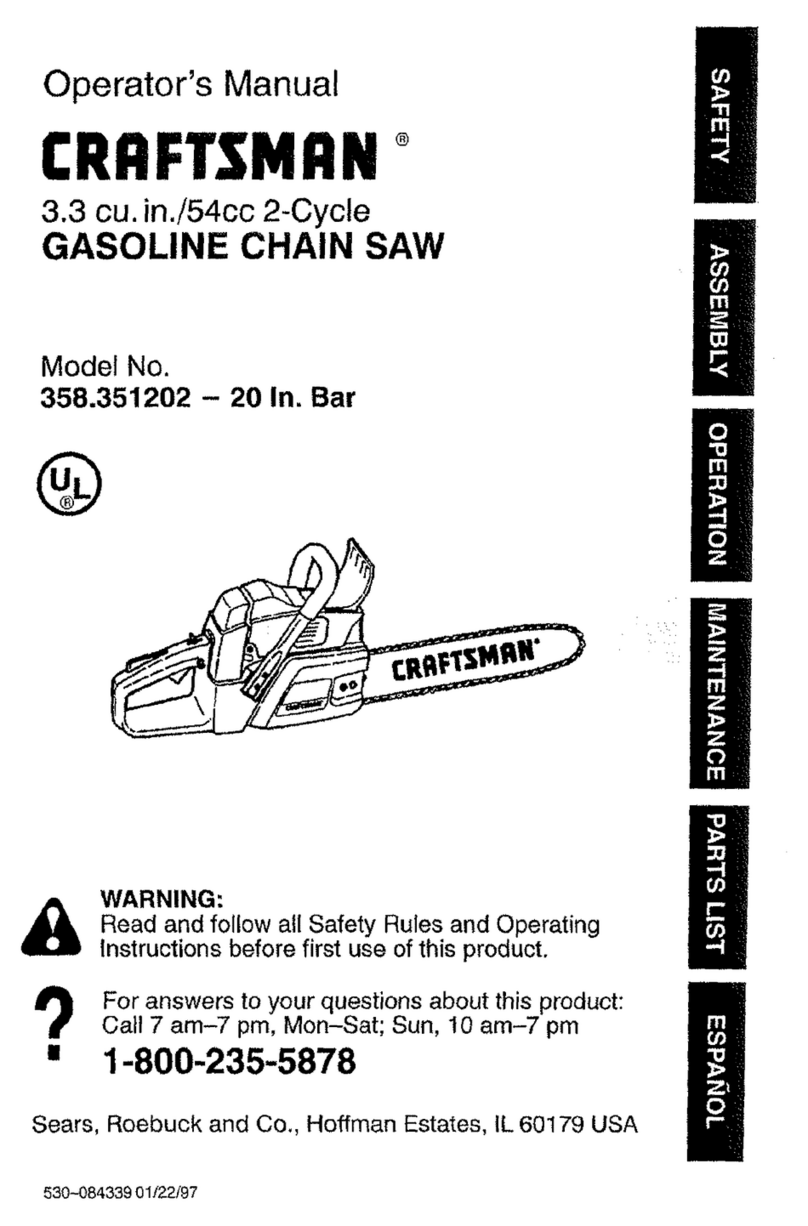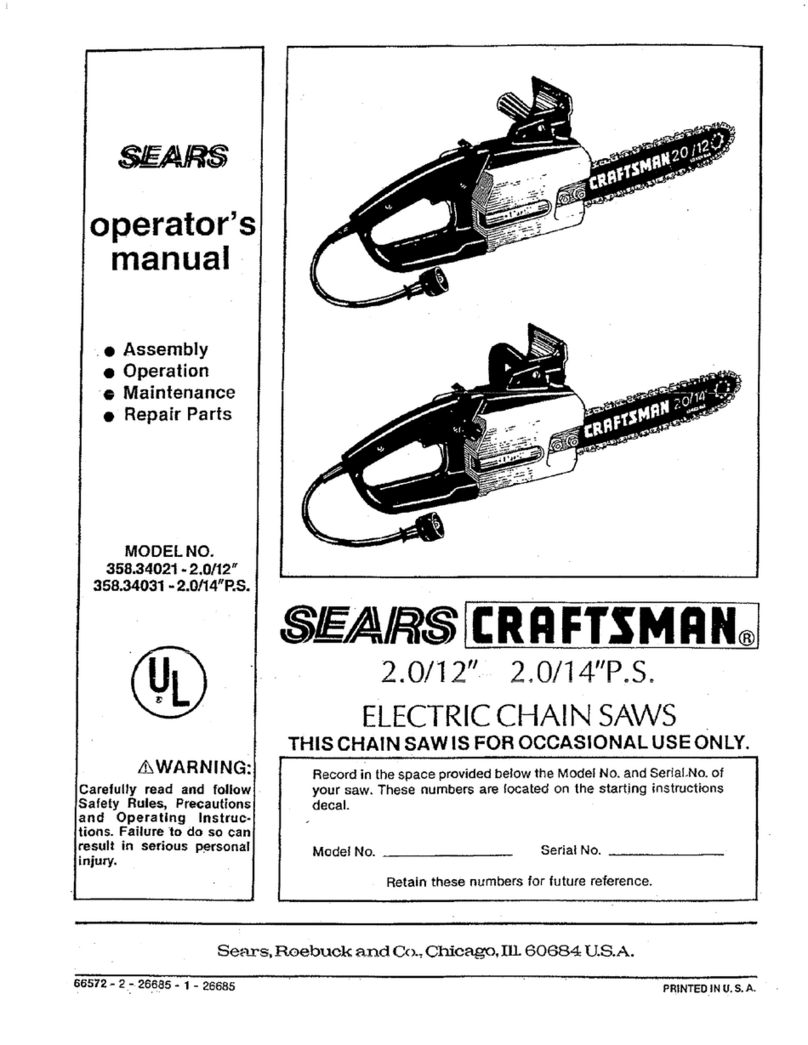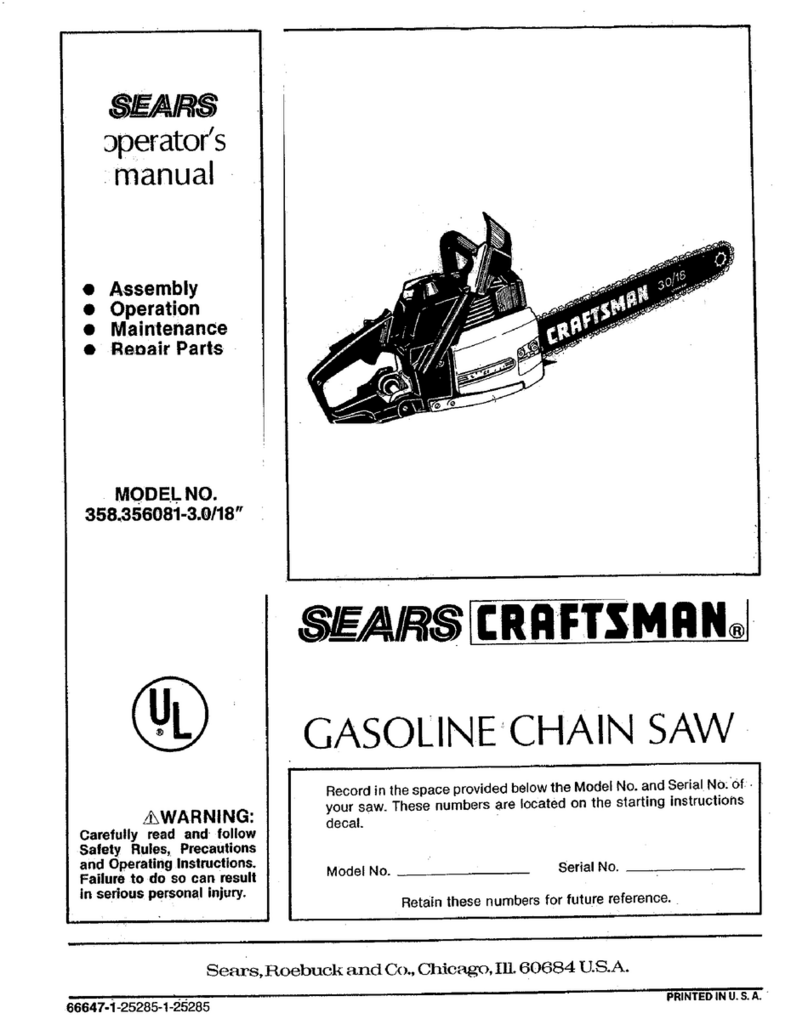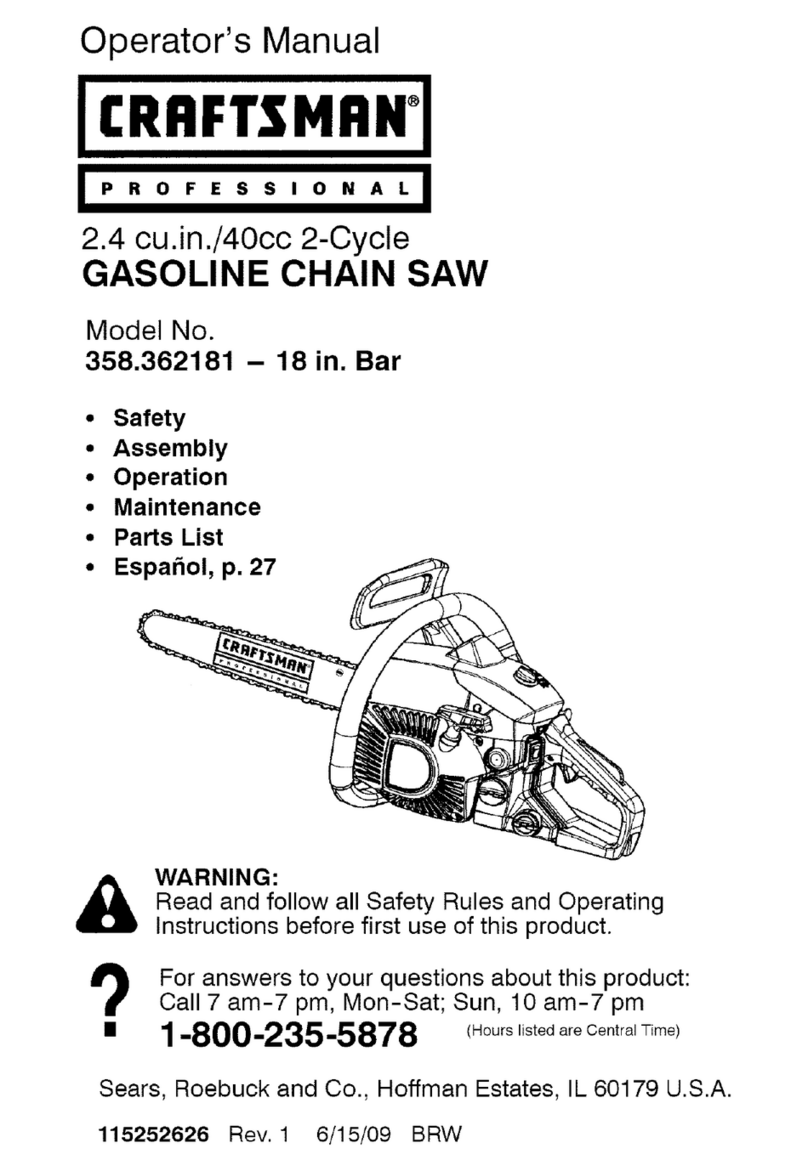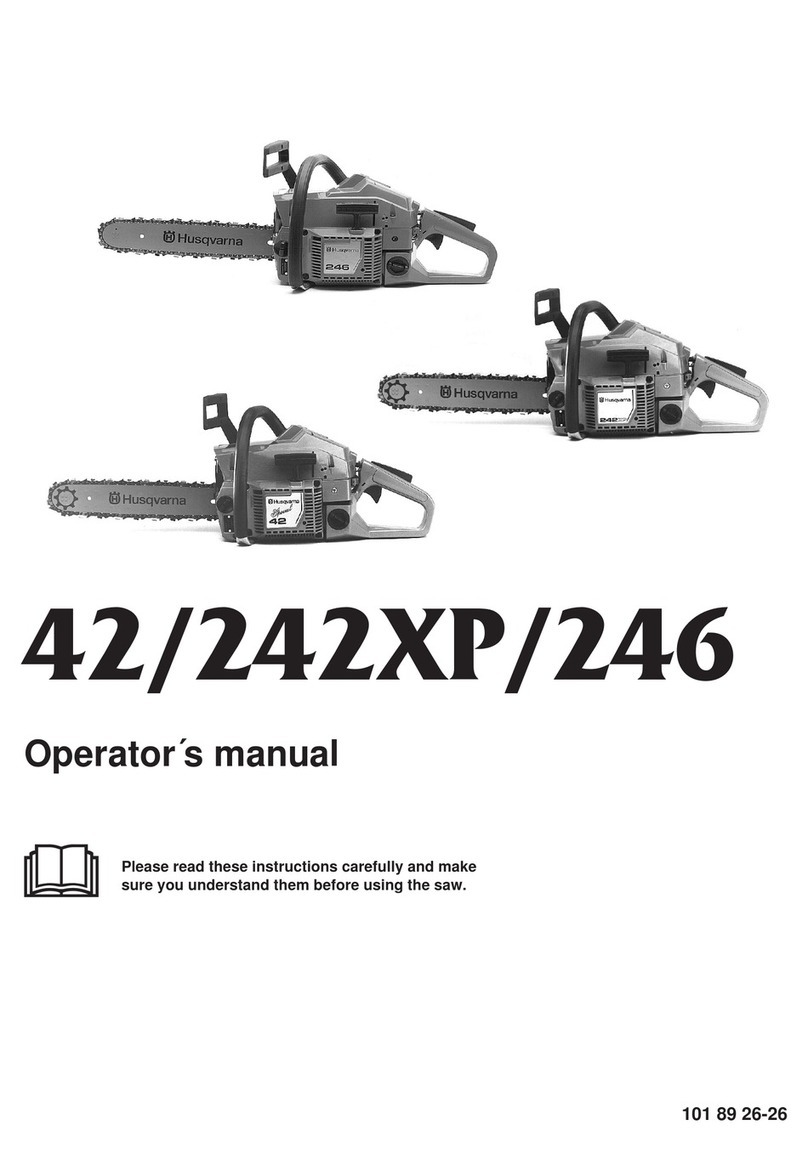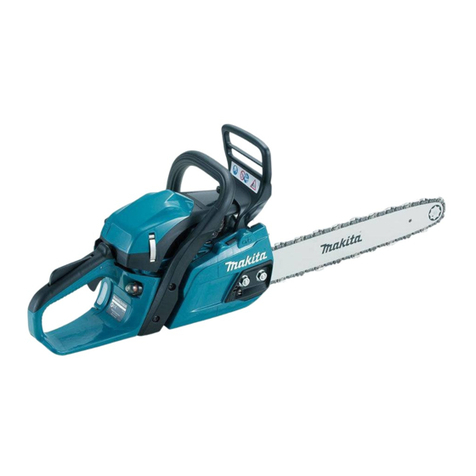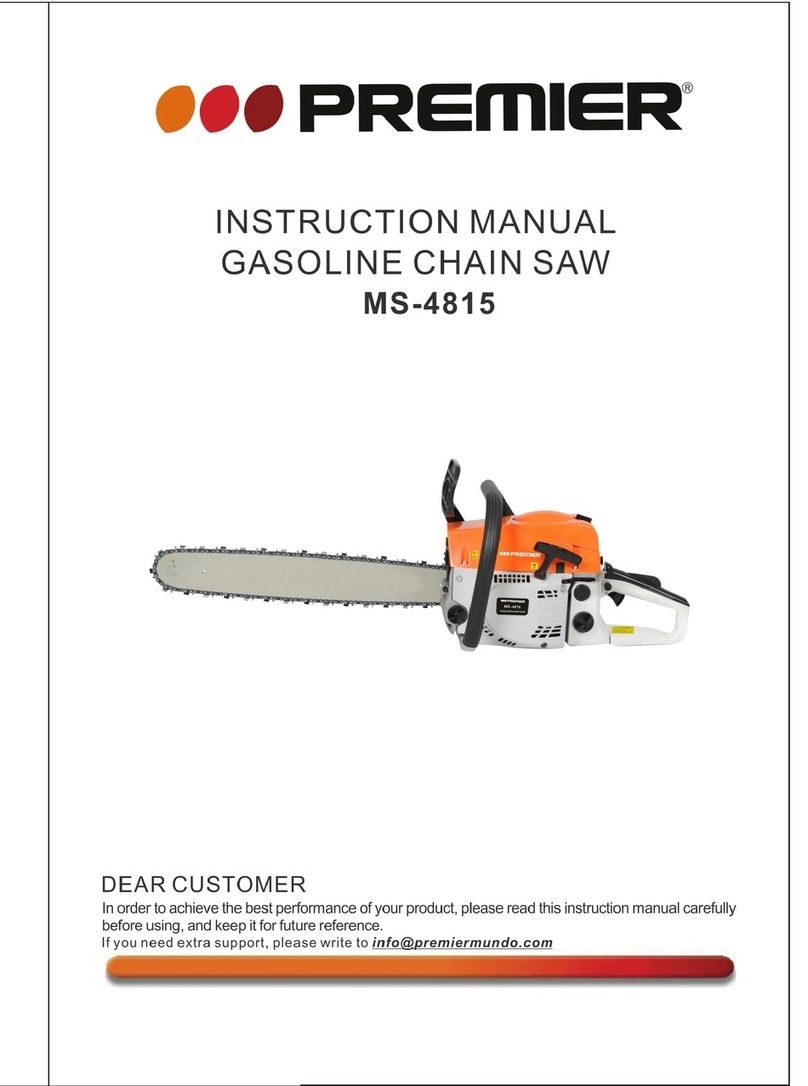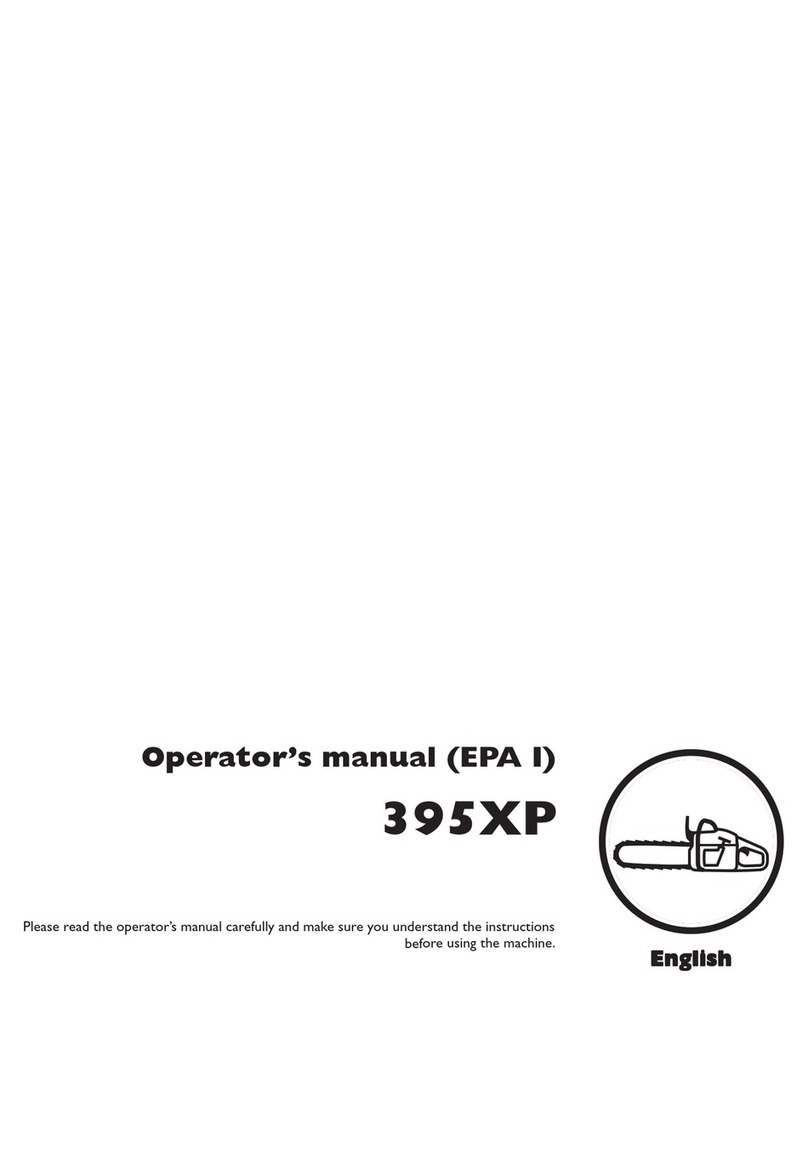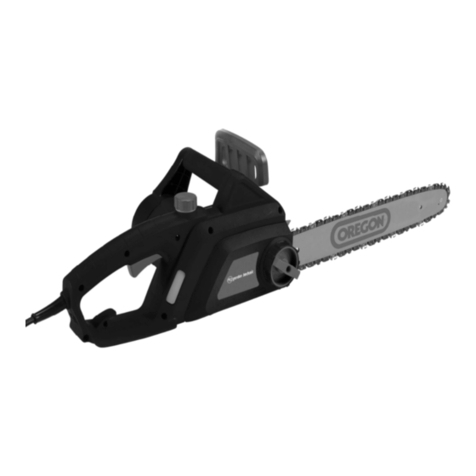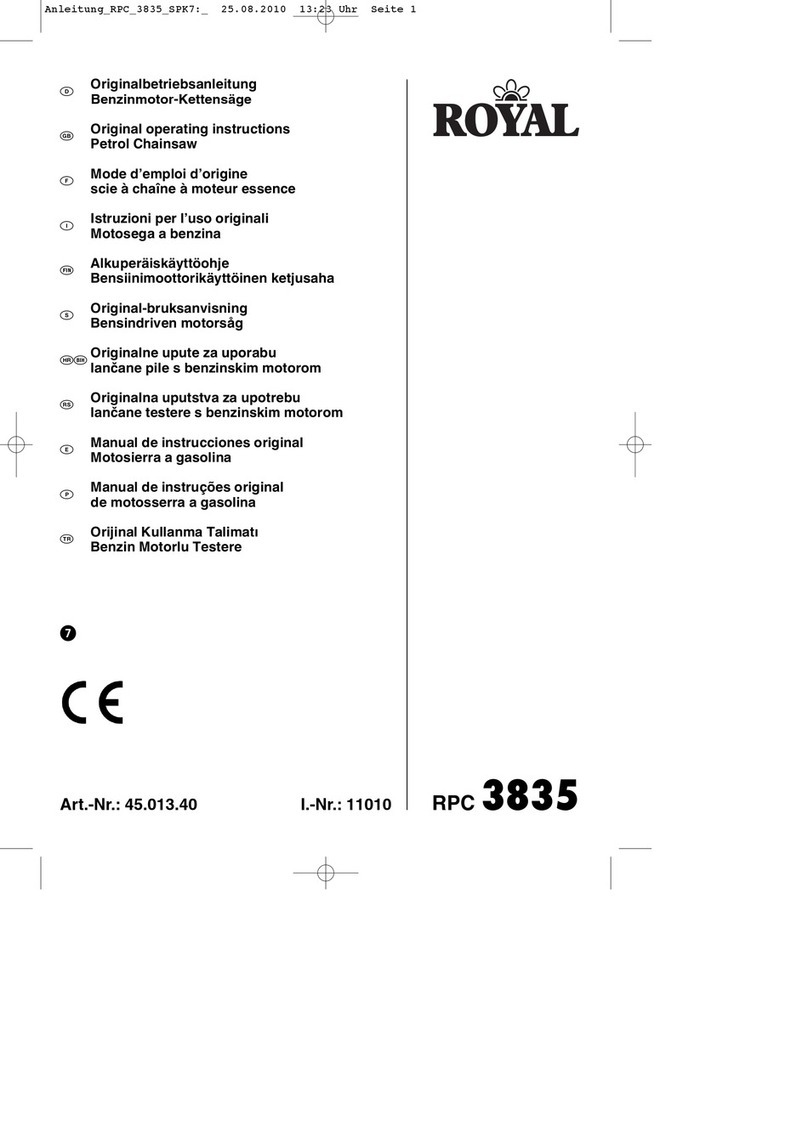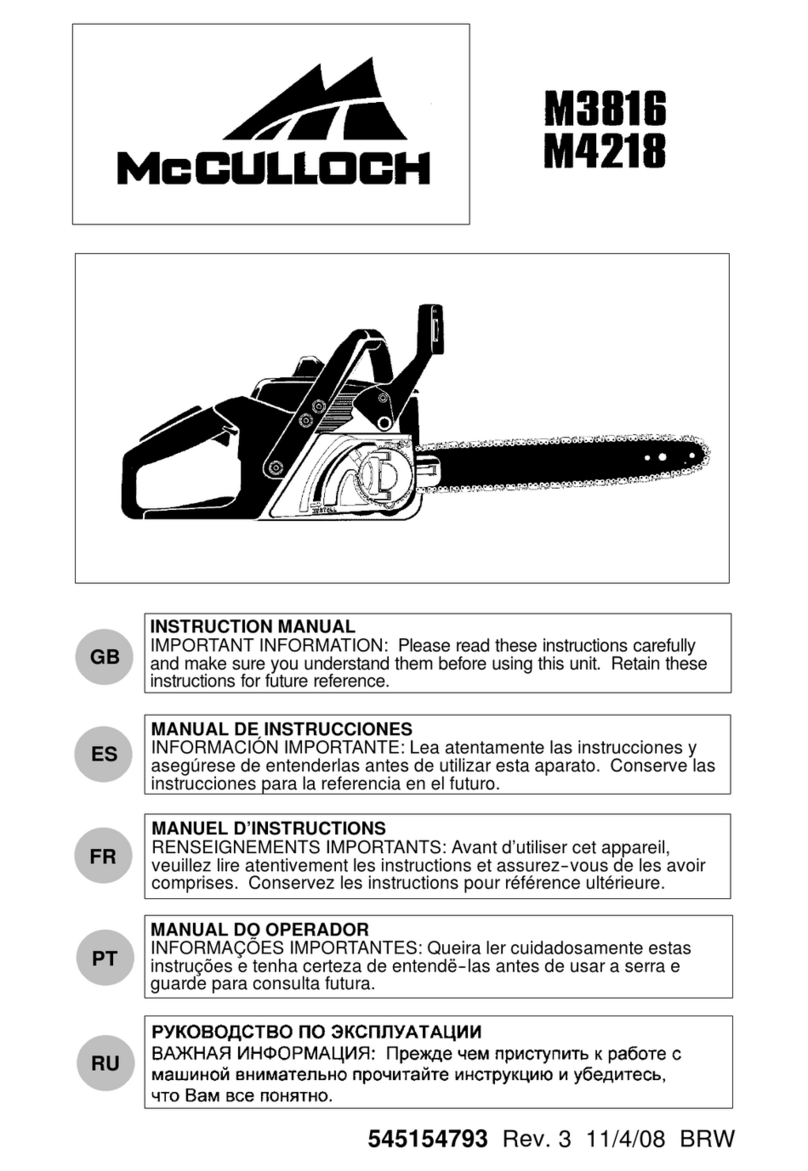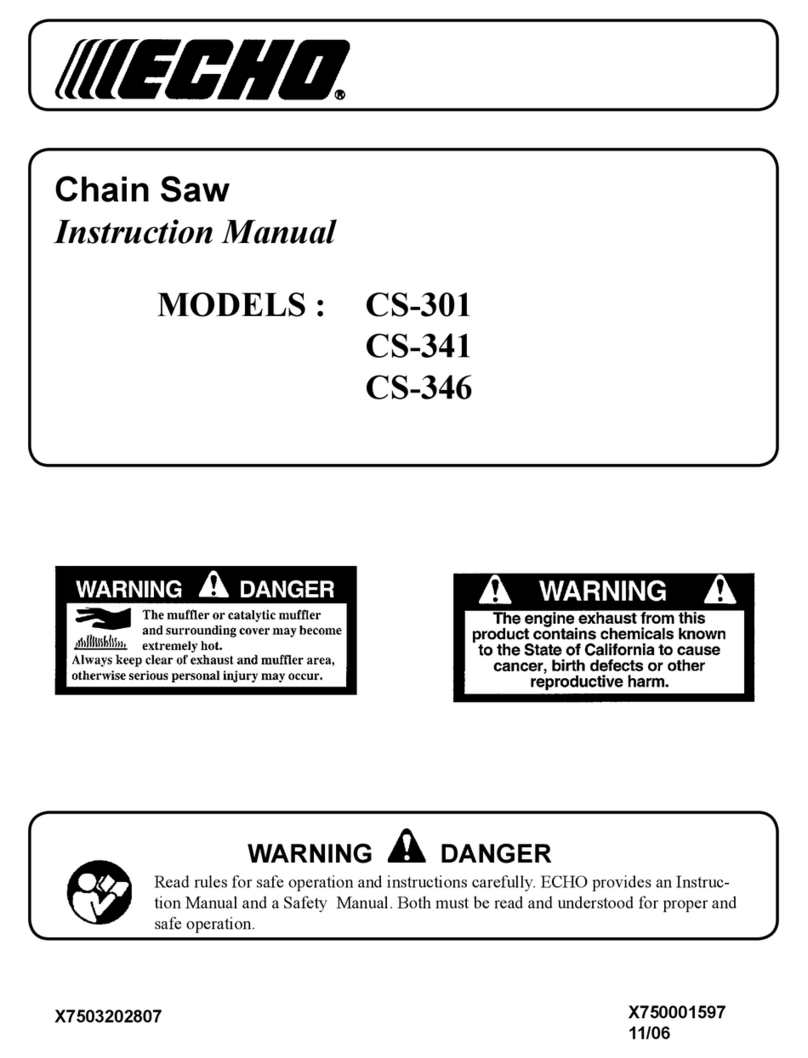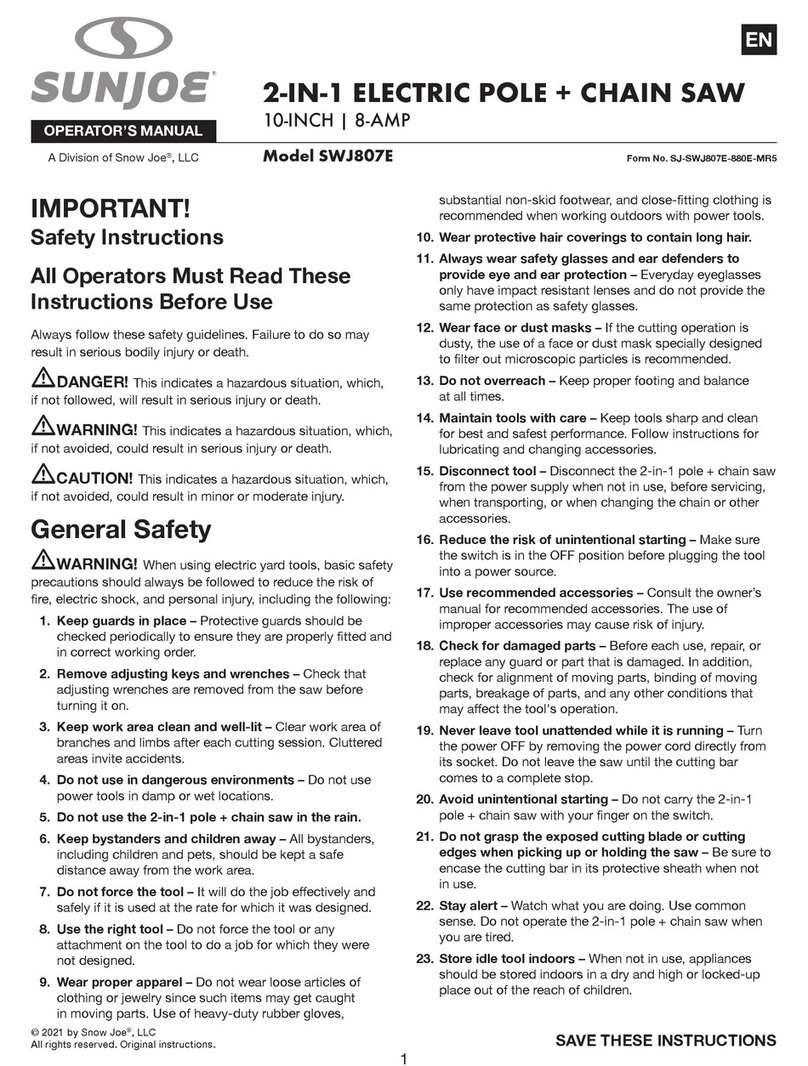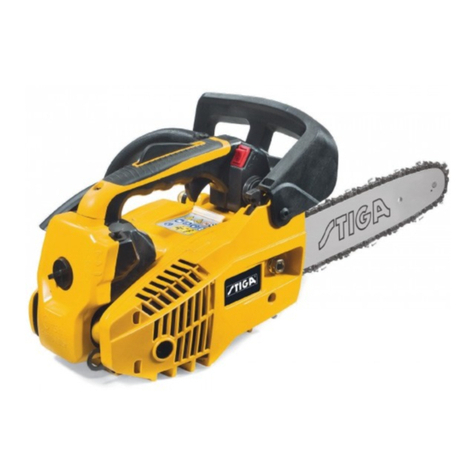OffFull
• Squeezeandholdthrottletrigger.
Withthumbpressfastidlelockdown;
thenreleasethrottletrigger.
• Sharplypullthestarterropehandle5
timeswithyourrighthand.
• Fullypushinchokeknob;pullthe
starterropeuntiltheenginestarts.
• Allowtheenginetorunforapproxi-
mately5seconds.Then,squeeze
andreleasethethrottletriggertoal-
lowenginetoreturntoidlespeed.
STARTING A WARM ENGINE
DO NOT use tile choke to start a warm
engine or flooding and hard starting
may occur.
• Fully push in choke knob.
• Move ON/STOP switch to ON position.
• Slowly press primer bulb 6 times.
• Squeeze and hold throttle trigger.
With thumb press fast idle lock down;
then release throttle trigger.
• Sharply pull starter rope with your
right hand until the engine starts.
• Squeeze and release throttle trigger
to return engine to idle speed.
DIFFICULT STARTING OR
STARTING A FLOODED ENGINE
The engine may be flooded if it has not
started after 10 pulls.
Flooded engines can be cleared of ex-
cess fuel by following the warm engine
starting procedure listed above. Insure
the ignition switch is in the ON position.
Starting could require many pulls de-
pending on how badly unit is flooded.
If engine fails to start, refer to the
TROUBLESHOOTING CHART or call
1-800-235-5878.
OPERATING TIPS
• Check chain tension before first use
and after 1 minute of operation. See
CHAIN TENSION in the MAINTENANCE
section.
• Cut wood only. Do not cut metal,
plastics, masonry, non-wood building
materials, etc.
• Stop the saw if the chain strikes a
foreign object. Inspect the saw and
repair parts as necessary.
• Keep the chain out of dirt and sand.
Even a small amount of dirt will
quickly dull a chain and increase the
possibility of kickback.
• Practice cutting a few small logs us-
ing the following steps. This will help
you get the "feel" of using your saw
before you begin a major sawing op-
eration.
• Squeeze the throttle trigger and al-
low the engine to reach full speed
before cutting.
• Begin cutting with the saw frame
against the log.
• Keep the engine at full speed the
entire time you are cutting.
• Allow the chain to cut for you. Exert
only light downward pressure.
• Release the throttle trigger as soon
as the cut is completed, allowing
the engine to idle. If you run the
saw at full throttle without a cutting
load, unnecessary wear can occur.
• To avoid losing control when cut is
complete, do not put pressure on
saw at end of cut.
• Stop engine before setting saw
down.
TREE FELLING TECHNIQUES
,_ WARNING: Check for broken or
dead branches which can fall while
cutting causing serious injury. Do not
cut near buildings or electrical wires if
you do not know the direction of tree
fall, nor cut at night since you will not
be able to see well, nor during bad
weather such as rain, snow, or strong
winds, etc.
• Carefully plan your sawing operation
in advance.
• Clear the work area. You need a
clear area all around the tree so you
can have secure footing.
• Study the natural conditions that can
cause the tree to fall in a particular
direction. These conditions include:
• The wind direction and speed.
• The lean of the tree. The lean of a
tree might not be apparent due to
uneven or sloping terrain. Use a
plumb or level to determine the di-
rection of tree lean.
• Weight and branches on one side.
• Surrounding trees and obstacles.
• Look for decay and rot. If the trunk is
rotted, it can snap and fall toward the
operator.
• Make sure there is enough room for
the tree to fall. Maintain a distance of
2-1/2 tree lengths from the nearest
person or other objects. Engine
noise can drown out a warning call.
8
